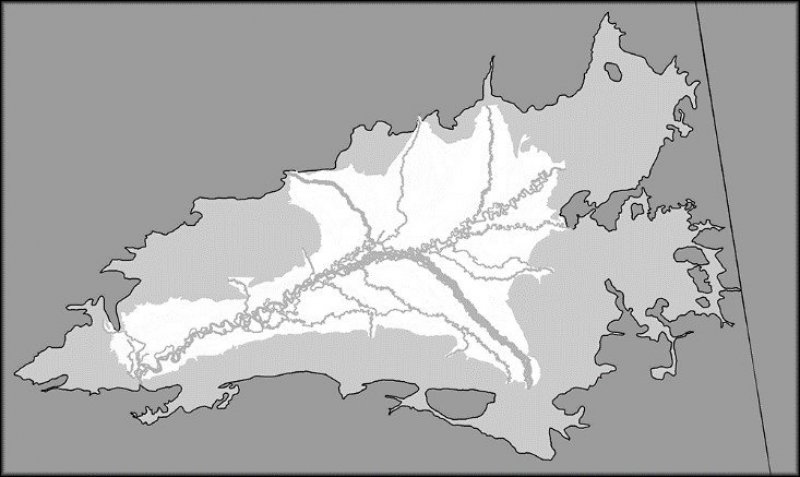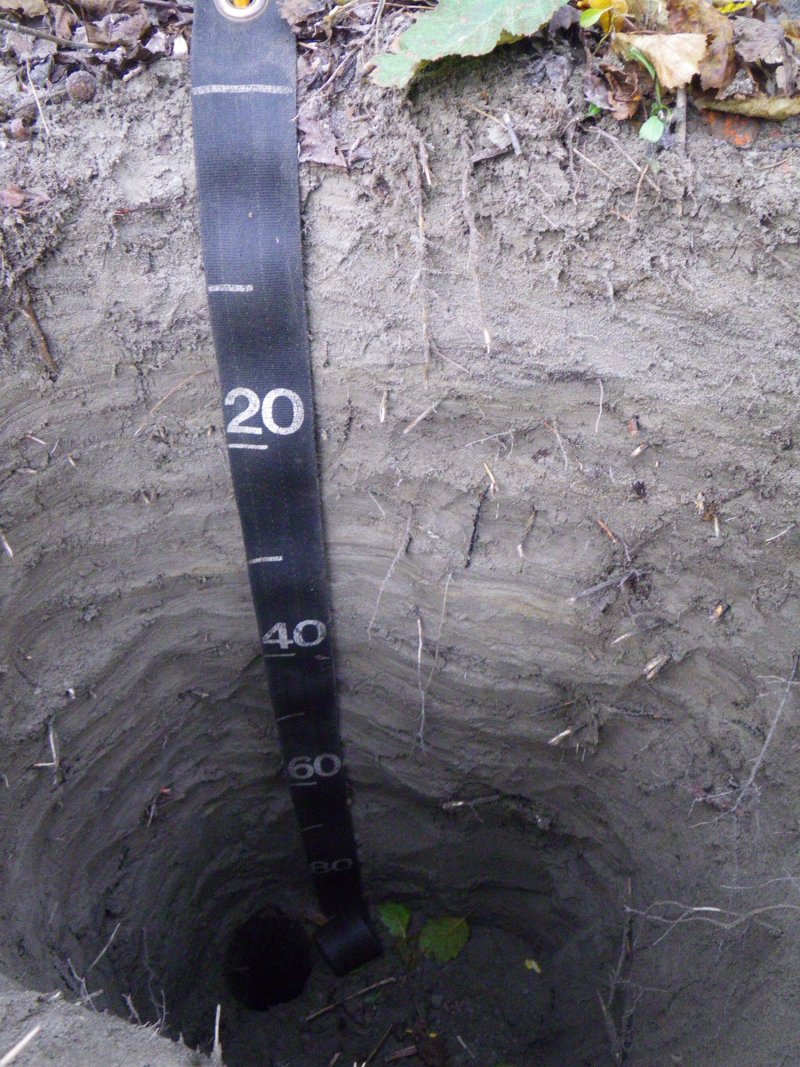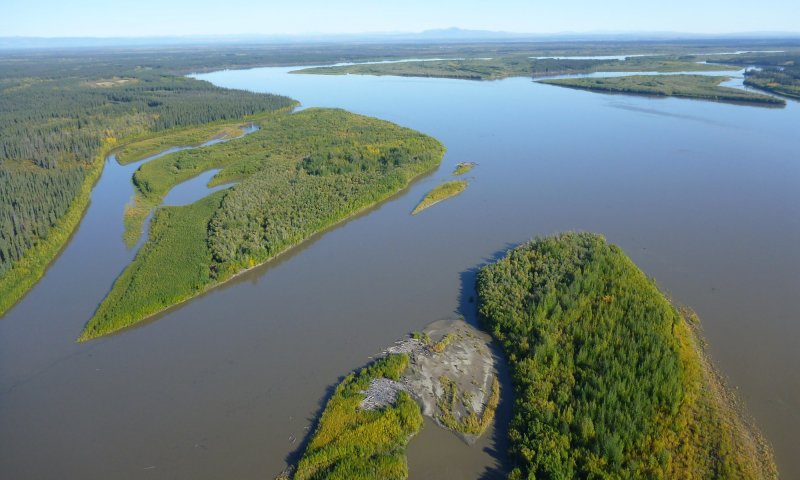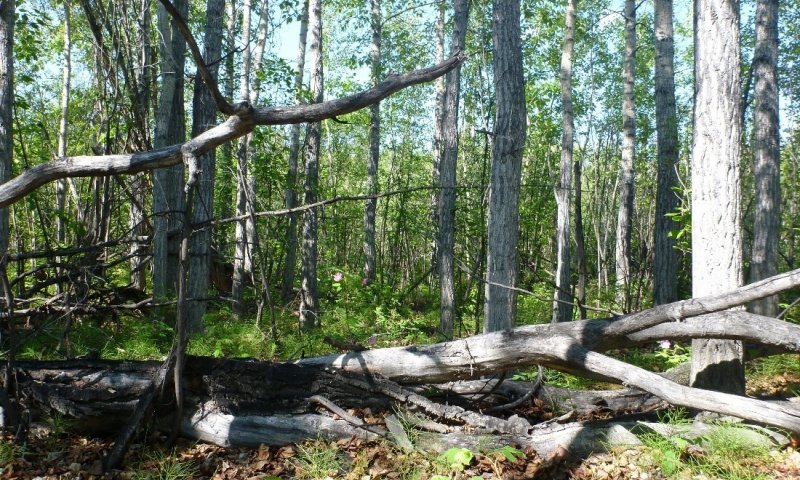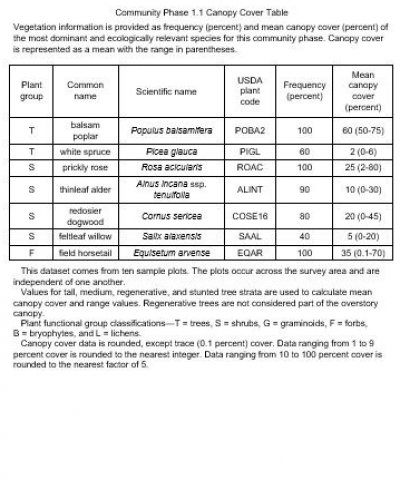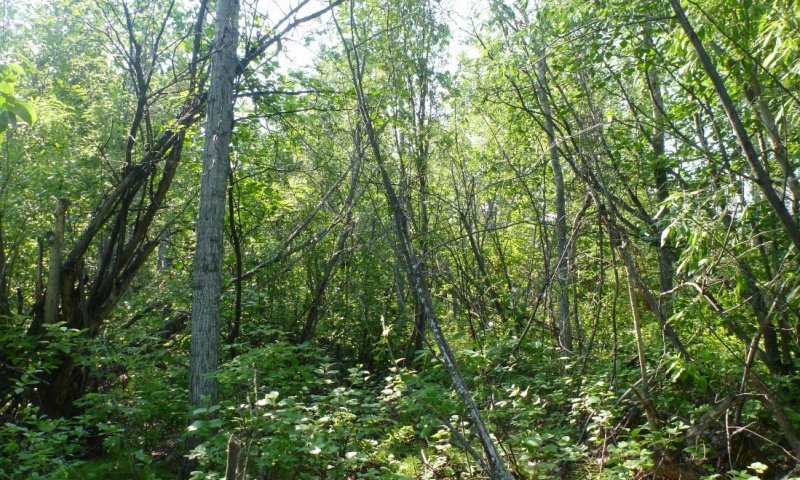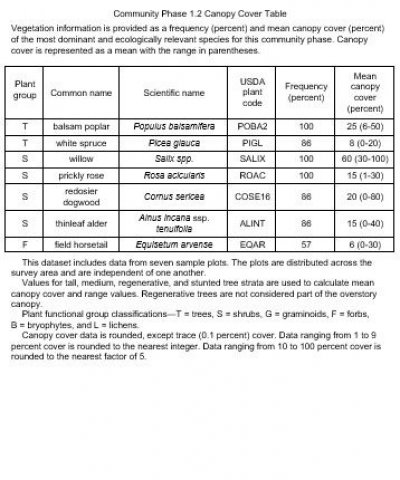

Natural Resources
Conservation Service
Ecological site XA232X01Y202
Boreal Forest Loamy Flood Plain Middle
Last updated: 5/11/2020
Accessed: 12/22/2024
General information
Provisional. A provisional ecological site description has undergone quality control and quality assurance review. It contains a working state and transition model and enough information to identify the ecological site.
MLRA notes
Major Land Resource Area (MLRA): 232X–Yukon Flats Lowlands
The Yukon Flats Lowlands MLRA is an expansive basin characterized by numerous levels of flood plains and terraces that are separated by minimal breaks in elevation. This MLRA is in Interior Alaska and is adjacent to the middle reaches of the Yukon River. Numerous tributaries of the Yukon River are within the Yukon Flats Lowlands MLRA. The largest are Beaver Creek, Birch Creek, Black River, Chandalar River, Christian River, Dall River, Hadweenzic River, Hodzana River, Porcupine River, and Sheenjek River. The MLRA has two distinct regions—lowlands and marginal uplands. The lowlands have minimal local relief and are approximately 9,000 square miles in size (Williams 1962). Landforms associated with the lowlands are flood plains and stream terraces. The marginal uplands consist of rolling and dissected plains that are a transitional area between the lowlands and adjacent mountain systems. The marginal uplands are approximately 4,700 square miles in size (Williams 1962).
This MLRA is bounded by the Yukon-Tanana Plateau to the south, Hodzana Highlands to the west, Porcupine Plateau to the east, and southern foothills of the Brooks Range to the north (Williams 1962). These surrounding hills and mountains partially isolate the Yukon Flats Lowlands MLRA from weather systems affecting other MLRAs of Interior Alaska. As a result, temperatures are generally warmer in summer and colder in winter than is characteristic in other areas at comparable latitude. There is a moisture and temperature gradient in which the lowlands region tends to be drier and colder and the surrounding marginal uplands region tends to be moister and warmer (PRISM Climate Group 2006).
The Yukon Flats Lowlands MLRA is mostly undeveloped lands that are sparsely populated and not accessible by a road system. A number of villages, including Beaver, Birch Creek, Chalkyitsik, Circle, Fort Yukon, Stevens Village, and Venetie, are adjacent to the Yukon River or one of its major tributaries. The largest village is Fort Yukon, which according to the 2010 U.S. Census has 583 residents that are dominantly Gwich’in Alaska Natives.
LRU notes
Alaska has no officially recognized LRU. However, there appear to be two distinct LRU in the Yukon Flats Lowlands MLRA. These LRU are thought to have differing climatic regimes, landforms, and soil types (STATSGO and Jorgensen and Meidinger 2015). The two LRU were previously discussed in the MLRA notes section above and are termed the lowlands LRU and the marginal uplands LRU.
This ecological site is associated with the lowlands LRU.
Classification relationships
Yukon Flats Lowlands MLRA.
Ecological site concept
This ecological site is associated with the middle flood plain of major tributaries in the Yukon Flats Lowlands MLRA. In this MLRA, the flood plains of major tributaries have been divided into having low, middle, and/or high positions. When compared to the low flood plain, the middle flood plain has less frequent and shorter duration flood events. When compared to the high flood plain, the middle flood plain has more frequent and longer duration flood events. Flooding occurs occasionally (5 to 50 times in 100 years) for long durations of time (between 7 and 30 days). Associated soils are considered moderately well drained. The reference state supports two plant communities related to flooding.
Reference plant community 1.1 is characterized as a closed deciduous forest (60-100 percent cover; Viereck et al. 1992) primarily composed of mature balsam poplar (Populus balsamifera). Seedlings of white spruce (Picea glauca) are commonly observed but generally have low canopy cover. Commonly observed understory species include prickly rose (Rosa acicularis), thinleaf alder (Alnus incana ssp. tenuifolia), redosier dogwood (Cornus sericea), feltleaf willow (Salix alaxensis), and field horsetail (Equisetum arvense). The soil surface is covered primarily by herbaceous litter and woody debris.
Associated sites
| XA232X01Y204 |
Boreal Forest Loamy Flood Plain High This ecological site occurs on the high flood plain of major tributaries in the Yukon Flats Lowlands MLRA. Flooding occurs occasionally (5 to 50 times in 100 years) for brief durations of time (between 2 and 7 days). The reference plant community is characterized as an open needleleaf forest (25 to 60 percent cover) primarily composed of mature white spruce (Picea glauca). |
|---|---|
| XA232X01Y250 |
Boreal Woodland Gravelly Terraces Dry This ecological site is associated with somewhat excessively drained soils on the tread of gravelly stream terraces in Yukon Flats Lowlands MLRA. Gravelly horizons occur at very shallow depth (0 to 10 inches). The reference plant community is characterized as a needleleaf woodland (10 to 25 percent cover; Viereck et al. 1992) composed primarily of mature white spruce (Picea glauca). |
| XA232X01Y200 |
Boreal Scrub Loamy Flood Plain Low This ecological site is associated with the low flood plain of major tributaries in the Yukon Flats Lowlands MLRA. Flooding occurs frequently (greater than 50 times in 100 years) for long durations of time (between 7 and 30 days). The reference plant community is characterized as closed tall scrub (greater than 75 percent shrub cover; Viereck et al. 1992) primarily composed of a mixture of willow (Salix spp.) and alder (Alder spp.). |
| XA232X01Y205 |
Boreal Grass Loamy Flood Plain Depressions This ecological site is associated with depressions on flood plains in the Yukon Flats Lowlands MLRA. The reference state plant communities are associated with soils that both pond and flood. Ponding occurs frequently (greater than 50 times in 100 years) for long durations of time (between 7 and 30 days). Flooding occurs occasionally (5 to 50 times in 100 years) for brief durations of time (between 2 and 7 days). The reference plant community is characterized as mesic graminoid herbaceous (Viereck et al. 1992) and is primarily composed of bluejoint (Calamagrostis canadensis). |
| XA232X01Y218 |
Boreal Woodland Loamy Frozen Terraces This ecological site is associated with wet soils on the tread of stream terraces in Yukon Flats Lowlands MLRA. Soils generally have permafrost at moderate depth (20 to 40 inches) and pond occasionally for long durations of time. The reference plant community is characterized as a needleleaf woodland (10 to 25 percent cover; Viereck et al. 1992) composed of black spruce (Picea mariana) and white spruce (Picea glauca). |
| XA232X01Y206 |
Boreal Scrub Loamy Frozen Flood Plain Depressions This ecological site is associated with depressions on flood plains in the Yukon Flats Lowlands MLRA. The reference state plant communities are associated with soils that both pond and flood. Ponding occurs occasionally (5 to 50 times in 100 years) for brief durations of time (between 2 and 7 days). Flooding occurs occasionally for brief durations of time. The reference plant community is characterized as open tall scrub (Viereck et al. 1992) and is primarily composed of willow (Salix spp.). |
Similar sites
| XA232X01Y200 |
Boreal Scrub Loamy Flood Plain Low While seedlings of balsam poplar are commonly observed, stands of mature balsam poplar are not associated with this ecological site. Ecological site XA232X01Y200 is characterized by the dominance of shrubby vegetation. |
|---|---|
| XA232X01Y204 |
Boreal Forest Loamy Flood Plain High While seedlings and mature individuals of balsam poplar are commonly observed, stands of mature balsam poplar are not associated with this ecological site. Ecological site XA232X01Y204 is characterized by the dominance of mature stands of white spruce. |
Table 1. Dominant plant species
| Tree |
(1) Populus balsamifera |
|---|---|
| Shrub |
(1) Rosa acicularis |
| Herbaceous |
(1) Equisetum arvense |
Legacy ID
F232XY202AK
Click on box and path labels to scroll to the respective text.
